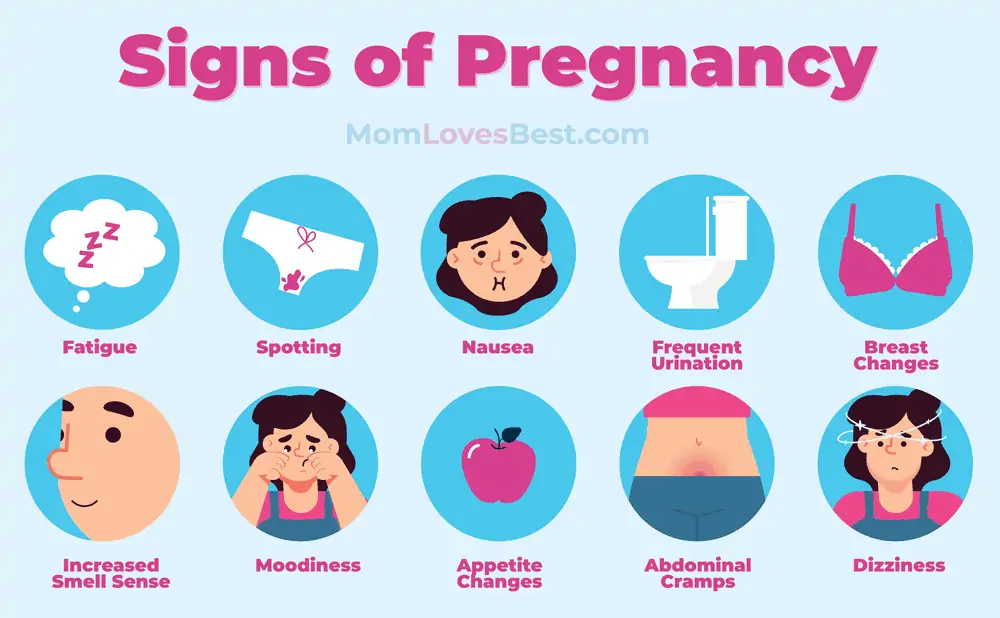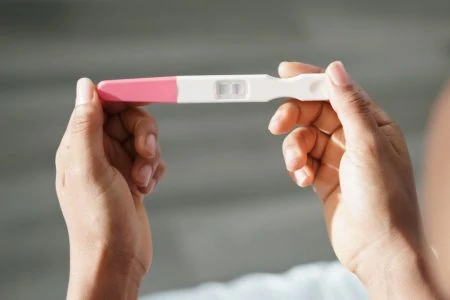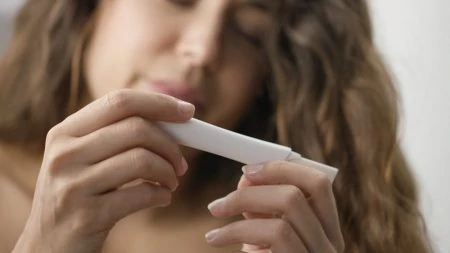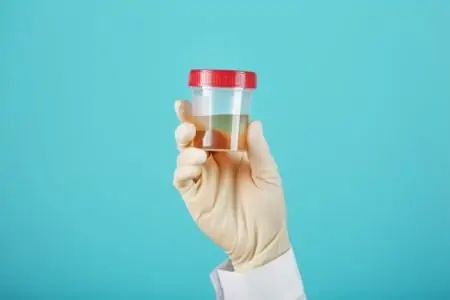Do you just have a gut feeling you’re pregnant? Are you stuck at home but want to find out if you’re pregnant right now?
Homemade pregnancy tests have been around since before over-the-counter tests were available. They’re a quick, fun way to test for a pregnancy without having to run to the store.
We’ve spoken with women of all ages to learn more about the old-school methods of home pregnancy testing. We’ve spent hours scouring the internet to find out all we can about current home testing trends. And we’ve studied the statistics and the science behind these tests to answer all your questions.
We’ll cover how accurate homemade pregnancy tests are, explaining how they work, when you should take them, and what to do if you get a positive result.
Key Takeaways
- Homemade pregnancy tests have been around for a long time, but they are not scientifically proven methods and are not 100% accurate. They are best used for fun and should not be relied upon for confirmation of pregnancy.
- Homemade pregnancy tests work by detecting the hormone human chorionic gonadotropin (hCG) in the urine.
- To get the most accurate results, it is recommended to wait until at least a week after a missed period before taking the test, and to take the test first thing in the morning when the urine has a higher concentration of hCG.
- Confirm any positive results with a blood test or ultrasound through an OB-GYN or midwife.
- Early signs of pregnancy include nausea/vomiting, swollen or tender breasts, frequent urination, exhaustion/fatigue, and food cravings or aversions.
How Accurate Are Homemade Pregnancy Tests?
No pregnancy test (including over-the-counter tests) is 100 percent accurate. It’s important to remember that although homemade pregnancy tests are fun, they are not scientifically proven pregnancy testing methods. Always confirm your pregnancy with a blood test or ultrasound through your OB-GYN or midwife.
Also, homemade tests are trickier to read, and one person could interpret the results differently from another. You can also have false-negative or false-positive results.
False-negatives
A false-positive means your test results were positive, but you are not pregnant. This kind of result is rare but could happen if you misinterpreted the results, took the test too soon after taking a fertility drug with hCG, or had a pregnancy loss soon after the fertilized egg attached to the uterine wall (1).
It’s always a good idea to take a few homemade tests rather than just one. If you get mixed results, wait a few days or a week, and retake the test, or use a store-bought home pregnancy test. Be sure to follow up with your healthcare provider to confirm your pregnancy and start your prenatal care.
How Do Homemade Pregnancy Tests Work?
Homemade pregnancy tests work the same way as any over-the-counter pregnancy test — by detecting the hormone human chorionic gonadotropin (hCG). If you test positive, you may observe a chemical reaction between hCG in your urine and the substance you are using to test.
Your cells start to produce the hCG hormone when they start creating the placenta. This hormone increases rapidly early in pregnancy and enters your bloodstream and urine, confirming conception (2).
When Should I Take the Test?
Take Note
However, not every woman will have a missed period, and some women experience implantation bleeding, which could be mistaken for a period.
If you absolutely can’t wait for your missed period, then you can take a test as early as two weeks after conception. If you get a negative result, wait five days and retake the test.
Early Signs Of Pregnancy
It may also be time to take a pregnancy test if you are experiencing any of these symptoms:
- Nausea/vomiting.
- Swollen or tender breasts.
- Frequent urination.
- Exhaustion/fatigue.
- Food cravings or aversions.
- Abdominal bloating.
- Mild cramping.
- Mood swings.
- Dizziness or lightheadedness.
- Spotting or light bleeding.
How to Make a Homemade Pregnancy Test
Here are seven pregnancy tests you can make at home with instructions for taking them and interpreting the results.
Remember, none of these tests have been proven scientifically. The only reliable ways to confirm pregnancy are through store-bought pregnancy tests or a visit to your doctor.
For best results, use your first-morning urine and make sure your products are not expired.
1. Urine In A Jar Pregnancy Test
For this test, you need a clear jar (or cup) and your urine.
- Collect your urine in a clean jar first thing in the morning.
- Lay the jar on a flat surface and let sit for 24 hours.
- Negative Result: no change observed.
Positive Result: A thin white layer has formed at the top of the urine.
2. Sugar Pregnancy Test
Another cheap way to test the hCG in your urine and confirm your pregnancy is by using sugar.
- Place three teaspoons of white granulated sugar in a clean bowl.
- Urinate directly into the bowl, or urinate in a clean cup and add it to the bowl of sugar.
- Wait five to ten minutes.
- Negative Result: sugar dissolves.
Positive Result: sugar clumps together, does not dissolve.
3. Toothpaste Pregnancy Test
Everyone brushes their teeth. So, if you have nothing else in your house, you can use your toothpaste for your pregnancy test. But be sure to use white toothpaste for this test.
- Add two tablespoons of white toothpaste to a clean container.
- Urinate directly into the container, or urinate in a clean cup and add it to the container with the toothpaste.
- Wait five to ten minutes.
- Negative Result: no reaction.
Positive Result: the toothpaste starts to turn blue and begins to foam or froth.
4. Bleach Pregnancy Test
Bleach can be used to determine if you are expecting or not. Use plain bleach for this test; do not use scented or chlorine-free bleach.
Since bleach is a potentially hazardous chemical, you will need to take some precautions to use this safely. Wear gloves, a mask, and old clothes when handling bleach, especially if you think you might be pregnant. It is also best to run this test outside rather than in a confined space.
- Add one cup of bleach to a clean cup or bowl.
- Urinate in a separate clean cup. Try to get at least half a cup of urine.
- Add your urine to the bleach.
- Wait three to five minutes.
- Negative Result: no reaction or very little fizzing.
Positive Result: the mixture will start bubbling or fizzing up.
Take Note
5. White Vinegar Pregnancy Test
White vinegar is another product most people have at home, and it can also be used as a DIY pregnancy test.
- Add half a cup of distilled white vinegar to a clean bowl.
- Urinate directly into the bowl, or urinate in a clean cup and then add it to the vinegar.
- Wait three to five minutes.
- Negative result: no change in color.
Positive result: a change in color.
6. Dandelion Leaves Pregnancy Test
Who knew that the nature in your backyard could help you determine if you’re growing a human inside of you or not?
- Collect two to three dandelion leaves and place them in a clean container.
- Urinate in a separate clean cup.
- Pour some of your urine over the dandelion leaves — enough to soak the leaves.
- Wait ten minutes.
- Negative Result: no red spots or blisters appear on the leaves.
Positive Result: red spots or red blisters appear on the surface of the leaves.
7. Baking Soda Gender Test
If you already know you’re pregnant but just can’t wait to find out the gender, you can use another common household kitchen item — baking soda — to see what you’re having. This is an old wives tale, but it might be fun to do!
- Add two tablespoons of baking soda to a clean bowl.
- Urinate in a separate clean cup.
- Add your urine to the bowl with the baking soda.
If it fizzles like beer or soda, you’re probably having a boy. If there is little to no reaction, you are probably having a girl.
Remember
What if It’s Positive?
You will probably experience an overload of mixed feelings once you see that positive result. You may be overjoyed — especially if you’ve been trying for a long time. You might be feeling frightened, scared, or even disappointed. All these feelings are totally normal, and it’s common to experience several or all of them at once.
Talk to someone about how you’re feeling — your partner, a friend, a parent, or your doctor. It helps to have someone to share your experience with.
Here are nine more things you should do once you find out you’re pregnant:
- Write down the first day of your last period to help calculate your due date.
- Call your OB-GYN or midwife to schedule your first prenatal appointment and confirm your pregnancy.
- Start taking a prenatal vitamin.
- Talk with your doctor to find out which medications are safe for use during pregnancy.
- Eliminate or reduce your caffeine intake to 200mg per day (one 12 ounce cup of coffee).
- Eliminate alcohol, raw meat, fish, eggs, soft cheeses, unpasteurized milk, deli meat, and fish high in mercury, such as swordfish, shark, and king mackerel (4) from your diet.
- Engage in low to moderate pregnancy-safe exercise four to five days a week. Take a 30-minute walk, swim some laps, or sign up for a prenatal yoga class.
- Decide when you’ll announce your pregnancy. Many women like to wait until after the first trimester, when the chance of miscarriage drops drastically, to announce their pregnancy. Others are comfortable with announcing early on. Tell your employer as soon as possible so they can plan to accommodate you and your baby.
- Start documenting your pregnancy in a journal, preparing yourself for pregnancy, and be sure to take lots of belly pictures.
Share Your Experience
Homemade pregnancy tests have been around for centuries and are a quick, inexpensive, and fun way to see if you’re pregnant. However, no homemade or over-the-counter pregnancy tests are 100% accurate. Be sure to follow up any test results with your OB-GYN or midwife to confirm your pregnancy and start prenatal care.
Have you ever tried any of these homemade pregnancy tests? Were your results accurate? Share your experiences with us and the rest of the Mom Loves Best community.








